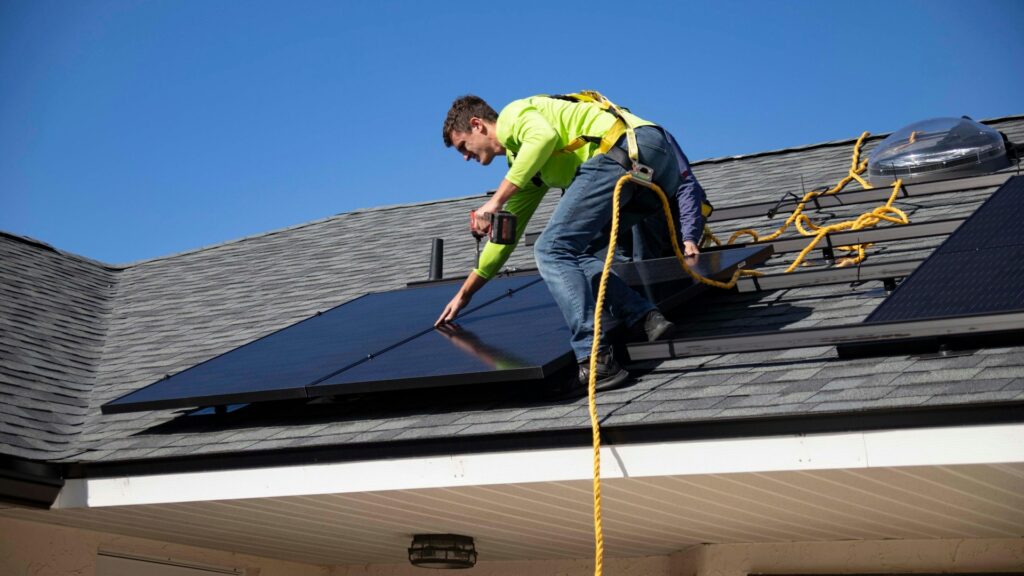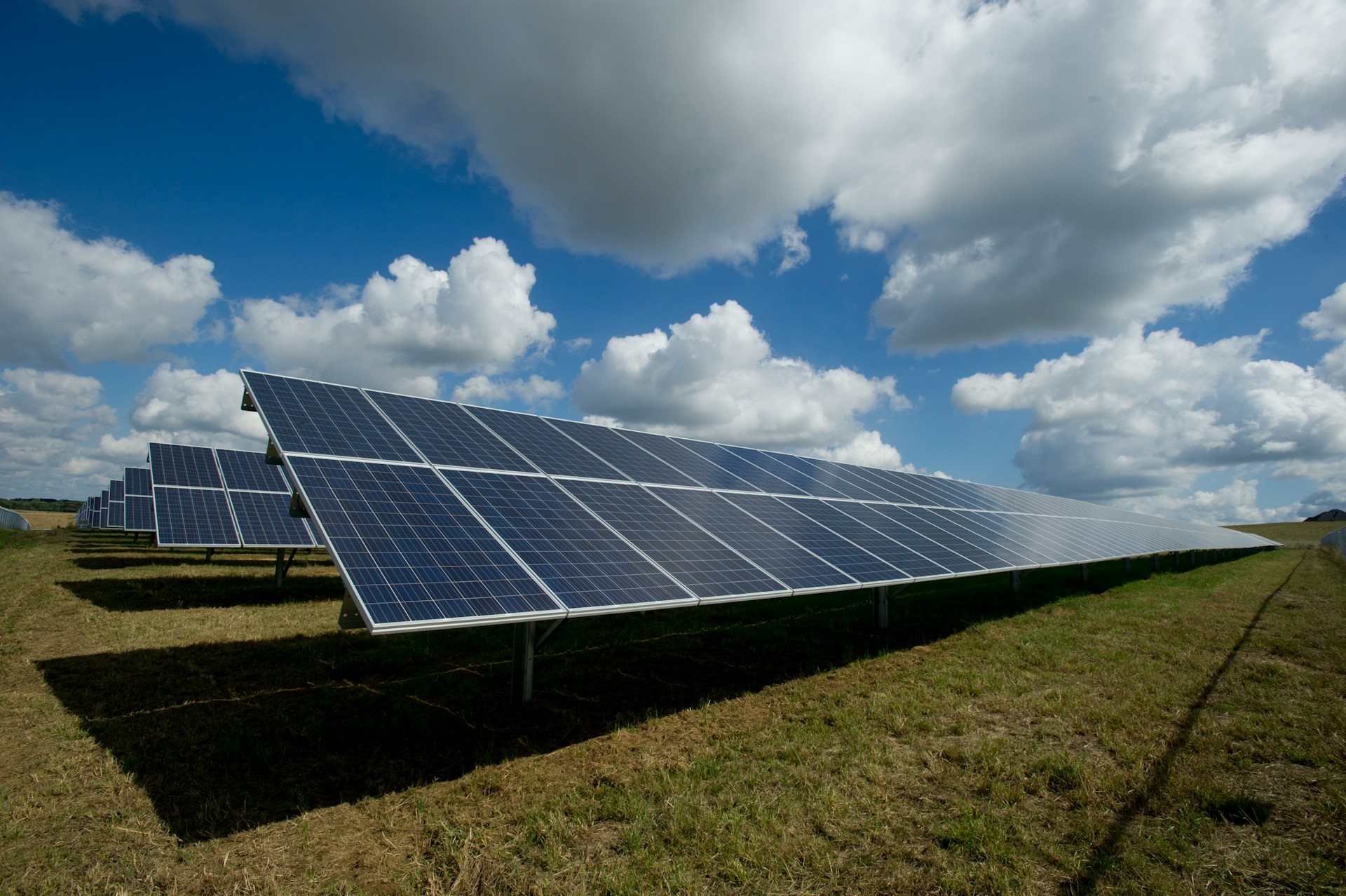Solar Panels Solutions For Energy and Construction
Our present infrastructure evolves rapidly as more people switch to renewable energy technology.
Traditional solar panels produced electricity alone but developers now integrate them for various building applications.
Solar panels work double duty by helping buildings generate power while also serving as sustainable construction components.
The new trend opens doors to creative architectural designs and better ways to optimize energy use across urban environments.
Solar Panels in Building-Integrated Photovoltaic (BIPV)
1. Redefining Construction Materials
Building-integrated photovoltaic (BIPV) is making solar panels work differently across buildings.
We now place solar panels directly into building components such as façades, windows, and roof tiles instead of just on rooftops.
The system lets buildings harvest energy directly from the sun without reducing their beautiful design features.
Photovoltaic glass acts as regular windows that absorb sunlight but let natural sunlight through.
Solar roof tiles serve both as roof covering and solar panels which lets homeowners skip installing new equipment on their roofs.
These building designs cut raw material costs yet deliver better energy output capabilities.
2. Energy Efficiency Meets Aesthetic Design
The main strength of BIPV is that it turns building features into both power sources and decorative elements.
Architects can add solar components to a building design without making the structure look less attractive.
The practical use of solar panels matches what city architects need today to create green buildings with attractive designs.
Dual-Use Solar Panels: Shading and Power Generation
1. Maximizing Utility in Public Spaces
Solar panels have started to appear in multi-functional designs that both power electric systems and provide shade.
Solar power systems with shade protection display their best use through parking lot walkways and bus stop canopies.
Solar panels shield people and vehicles from rain and sun clouds while creating free electricity.
Agrivoltaics is the new method where solar panels are placed directly overhead to protect crops while capturing solar energy.
The design works as a sun shield to safeguard plants with minimal water use while producing electricity at the same time.
Solar installations help farmers decrease power expenses and achieve better crop results when sunlight is strong.
2. Reducing Urban Heat Island Effects
Cities build up higher temperatures because their roads and buildings made of concrete and asphalt gather sunlight heat.
Shaded walkways and solar carports combine to lower harmful heat buildup in cities.
The installation directs heat away from surfaces to improve environmental temperatures and creates power from sunlight while cutting energy expenses.
Economic and Environmental Impact of Dual-Purpose Solar Solutions
1. Cost-Effectiveness in Construction
Building materials with solar technology create lasting profit advantages.
Your building’s initial costs will exceed standard material costs yet the reduced energy bills from the materials will pay for themselves.
Worldwide organizations now provide tax incentives and financial benefits to encourage people to use renewable energy systems.
2. Contributing to Sustainability Goals
A solar panel system delivers benefits that respond directly to worldwide sustainability objectives.
These technologies help create a circular economy by using solar panels to reduce fossil fuel consumption and lower construction needs for materials that cannot be renewed.
Energy-efficient buildings help fight climate change by making them generate lower carbon emissions.

Innovations Driving Dual-Purpose Solar Technology
1. Recent Innovations in Materials and Technology Solutions
Scientists are improving solar panel performance at a rapid pace through their materials science discoveries.
The growth of solar materials allows for 3D-printed installation of photovoltaic technologies using flexible films and transparent materials on diverse surfaces.
The new technology lets solar panels work with intricate building structures while making them practical for both homes and professional buildings.
2. Smart Integration with IoT
Solar technology becomes more effective when it works with IoT technology.
Solar panels that have sensor technology and system control work together to create the best energy output by monitoring sunlight and building energy usage conditions.
These monitoring systems report instant energy data to help organizations maximize their energy efficiency and usage.
Challenges and the Path Forward
1. Overcoming Technical Barriers
Solar panels designed for multiple uses encounter efficiency declines during specific weather conditions while production expenses rise and they lose durability over extended periods.
Further research will help make these systems work better and cost less to serve different market needs.
2. Scaling Adoption Globally
Regions choose dual-purpose solar technologies at different speeds based on their specific rules, monetary rewards, and community knowledge of these systems.
Policymakers, businesses, and communities should work together to solve these problems and promote this solution across all regions.
Solar panels can transform into a key tool for worldwide sustainable development when they receive appropriate backing structures.
Conclusion
Solar panels that function both in energy production and construction development bring new possibilities to sustainable power and building solutions.
Solar panel systems integrate directly with construction materials to enhance energy performance and create sustainable solutions.
The use of solar panels in city construction and urban planning will drive our path to sustainability as urban populations grow and global energy needs become more pressing.

